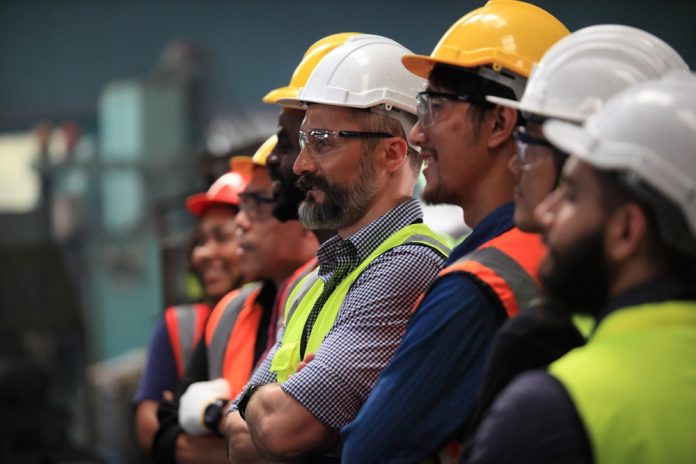
Continuous education and training are key facets of professional development in every industry—especially the skilled trades. It’s an industry of evolving fire and life safety standards, requirements that vary from one jurisdiction to the next, and a necessity for not only the highest quality of service but also the highest level of safety.
Training and certification opportunities span a wide range of skilled trades and include focus areas such as electrical, emergency response, fire protection systems, wildfire risk reduction, industrial hazards, hot work, healthcare, electric vehicle safety, and more.
When it comes to the actual implementation of training across the industry, a recent National Fire Protection Association® (NFPA®) report found that 66 percent of trade organizations offer training and development programs to employees at least twice a year, while 54 percent of respondents reported participating in at least two training sessions per year. However, the same survey found that roughly one-fourth of companies are planning to reduce the budget allocated to training and development.
Early and frequent training is vital for trade firms to stay ahead of changing state and national enforcements while concurrently delivering the best service and upholding safety standards. Luckily, digital transformation has ushered in interactive online training formats that provide increased access, flexibility, and employee retention.
Staying Ahead of Future Safety Protocols
Safety protocols and requirements vary from place to place and are constantly evolving, and it can be difficult for organizations to keep up if they aren’t taking a proactive approach to training and certification. This means it’s critical to think about company-wide education and compliance even when it’s not technically required. Companies with employees across state lines, for example, must adhere to varying compliance requirements. If employees aren’t up to speed on all requirements across locations, it makes the fluidity of staffing very difficult. By having a clear understanding of safety culture and a common language with which they can communicate protocols and procedures, employees are better equipped to reduce the risk of fire and other hazards, protect people and property, and keep operations running.
Take general contractors that operate across multiple jurisdictions as an example. Training is crucial for contractors to remain incident-free and compliant with job site safety regulations of the local jurisdiction. Staying ahead of the curve and recognizing local requirements avoid the possibility of having operations shut down for violations, which—besides being unsafe—is costly for contractors and building owners alike.
Executing training across various locations can be accelerated by taking advantage of digital training formats. Digital training helps organizations get the right training to the right people at the right time.
Online Formats Bring Access and Flexibility to Safety Training
To keep up with digital transformation, online training has become an increasingly common way for organizations to upskill and educate employees. NFPA’s survey data found that live or on-demand virtual formats are the most popular form of training among skilled trade professionals today.
There are several benefits to digital training, including accessibility, flexibility, and increased impact. Online training allows employees from far and wide to have access to standardized, high-quality content without having to travel (and incur the associated costs) to in-person sessions. Asynchronous virtual training also empowers employees to take a self-paced approach to learning modules. With a more flexible modality, employees can take courses in smaller increments, such as during lunch breaks or downtime, instead of having to come into work and complete training after already working a long shift. This helps reduce burnout typically caused by longer training programs and allows for better information retention. Immersive digital training using virtual or mixed realities has also been shown to be highly effective and impactful in teaching skilled trade professionals to be safer by simulating dangerous situations for learning. Additionally, live virtual training bring the best of both worlds together into one experience, affording the same access and location flexibility to employees while also maintaining key interactive features like Q&A sessions.
The Impact on Employee Retention Amid Hiring Challenges
It’s no secret that frequent, proactive training has many benefits across the business. It can promote a stronger safety culture and reduce insurance premiums, liability, injury, property damage, customer dissatisfaction, and more. A key benefit that is especially important in the skilled trades among widespread labor shortages, skills gaps, and retirement is the impact on employee engagement and retention.
A SHRM study found that training directly reduces employee turnover and absenteeism. When companies invest in their employees, those employees feel more empowered to do their job safely and well. Furthermore, younger generations entering the trades not only want opportunities to grow their careers, but they also want to work with emerging technologies. By investing in new and exciting formats like virtual and augmented reality training, employers can provide an exciting value proposition to current and prospective employees.
The Bottom Line
The need for continuous education and training cannot be overstated in today’s ever-evolving fire and life safety landscape. Safety protocols, compliance requirements, and technological advancements demand a proactive approach to ensure competence and safety. The shift toward digital training formats affords accessibility, flexibility, and greater impact. It also helps employers implement efficient and effective training that newer generations prefer.



